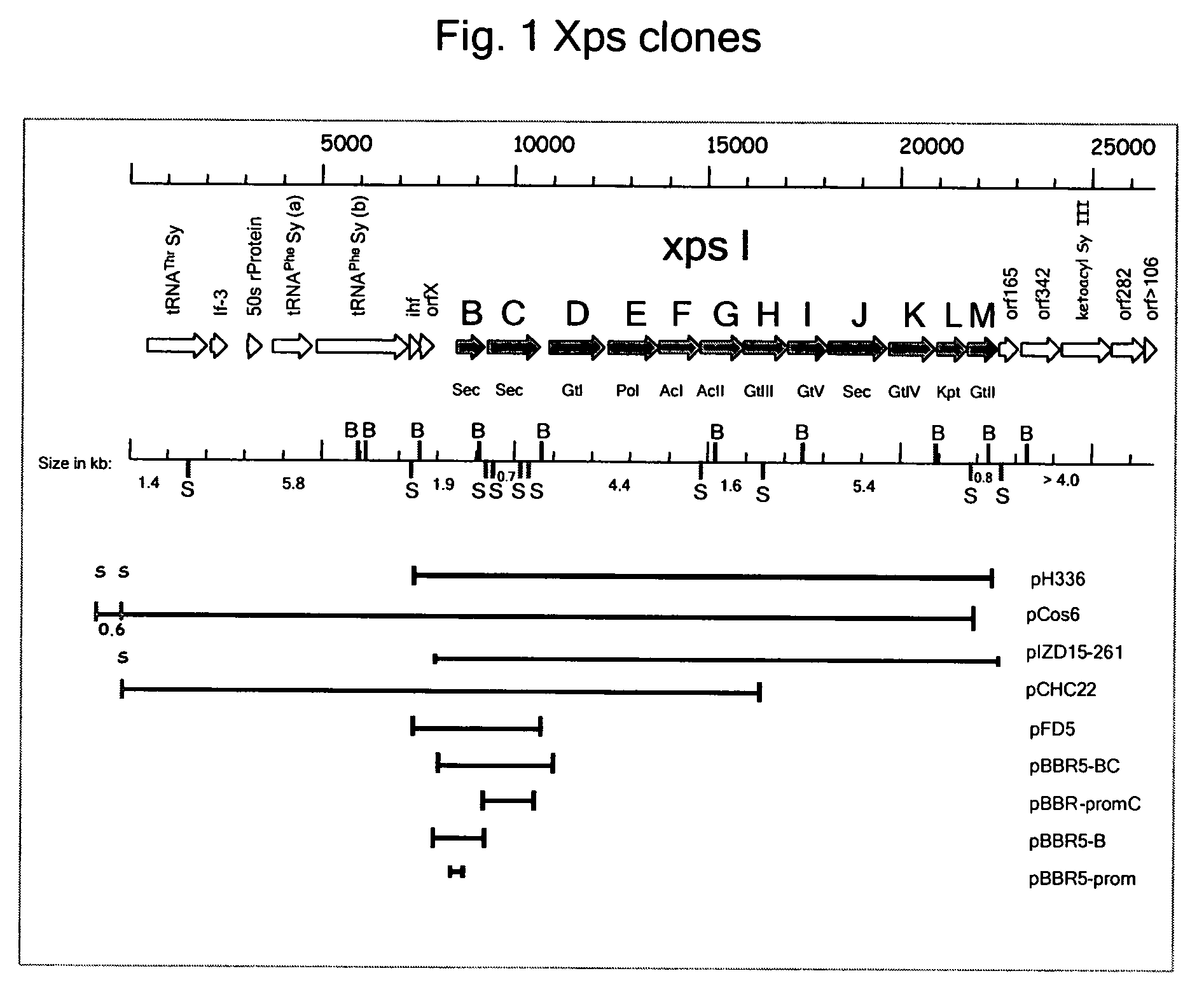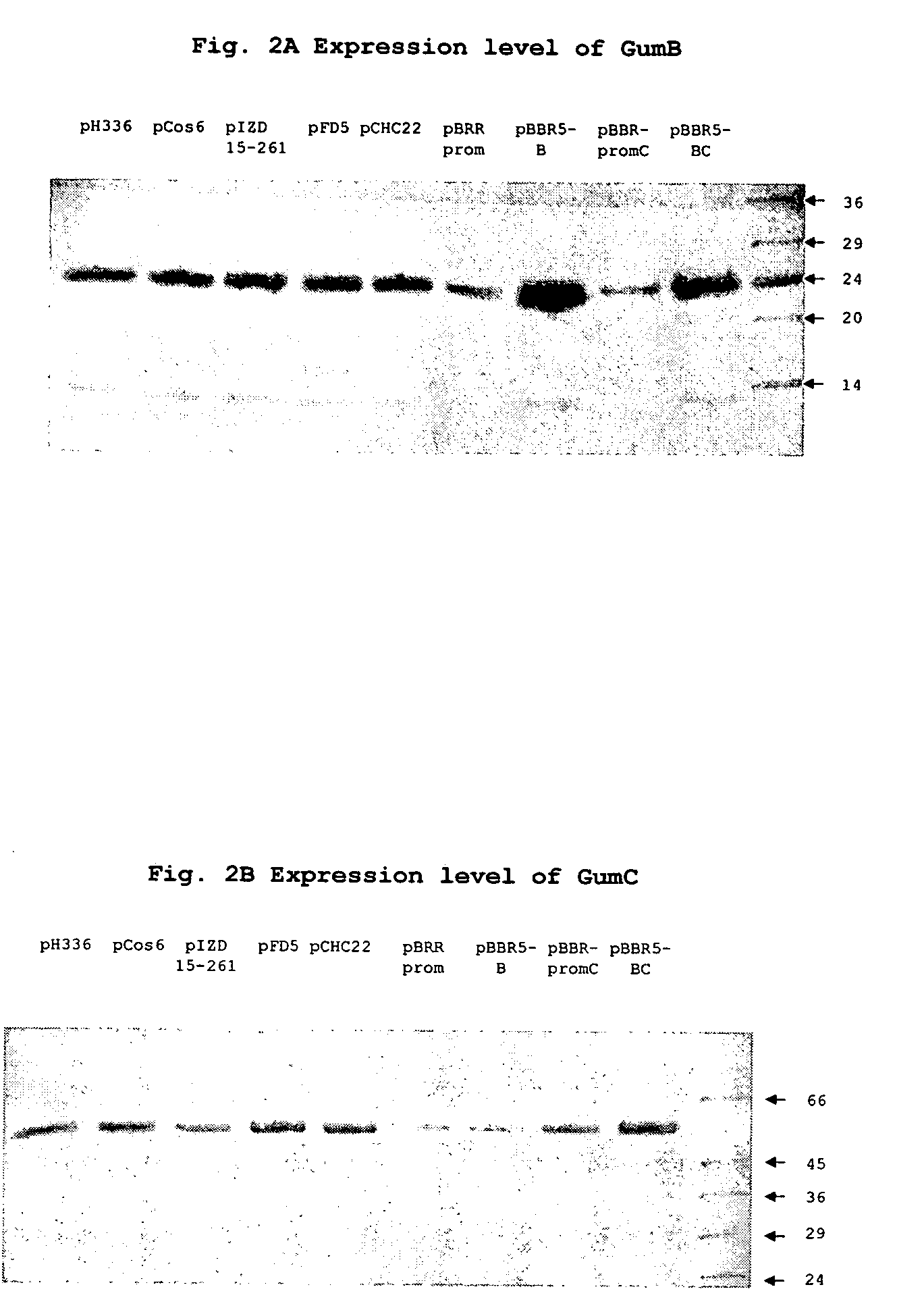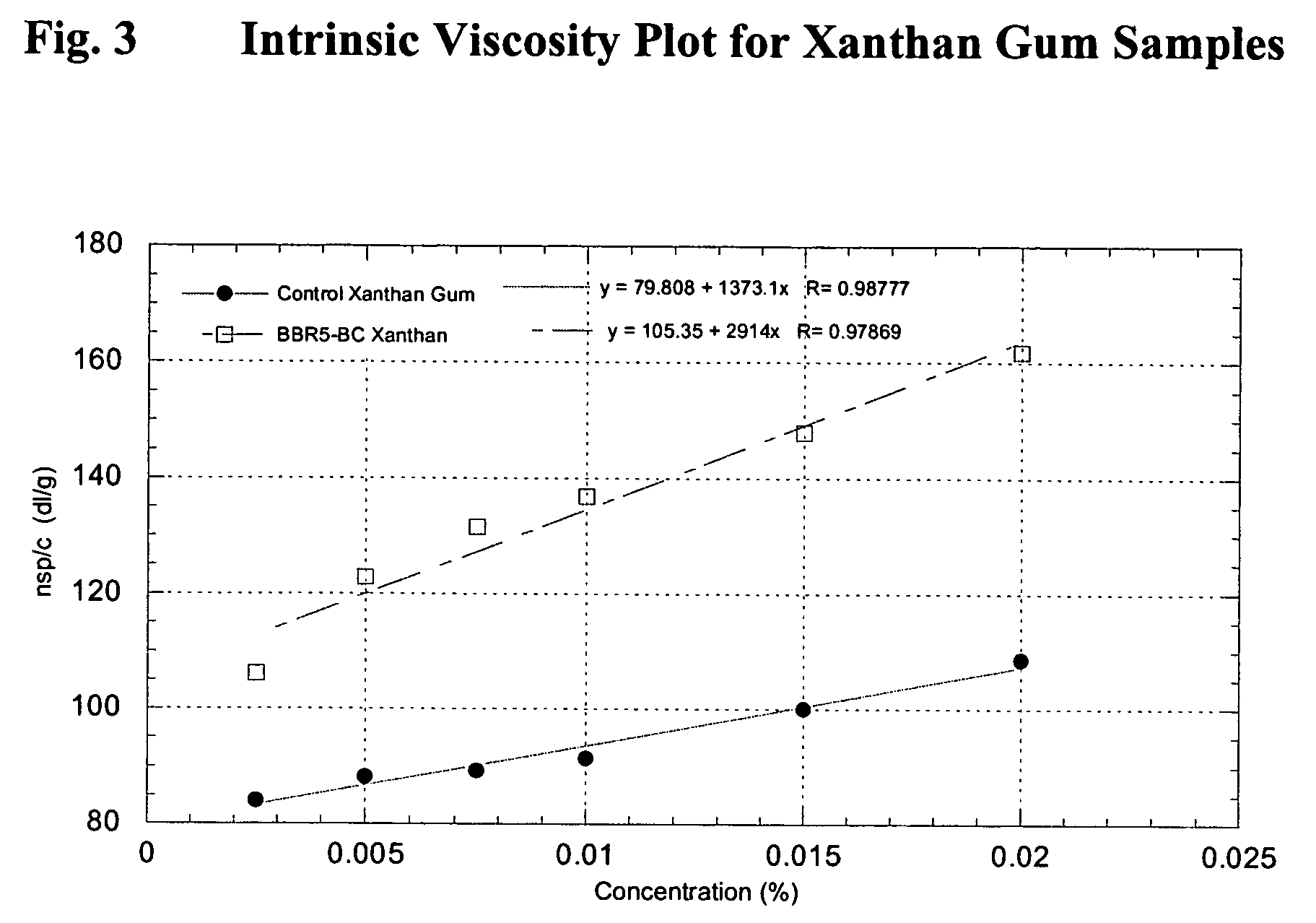High viscosity xanthan polymer preparations
a high-viscosity, xanthan technology, applied in the field of microorganism products, can solve the problems of heat treatment of xanthan fermentation broth, thermal degradation of xanthan, etc., and achieve the effect of increasing the viscosity
- Summary
- Abstract
- Description
- Claims
- Application Information
AI Technical Summary
Benefits of technology
Problems solved by technology
Method used
Image
Examples
example 1
Strain Construction
[0029]To isolate a fragment carrying the complete gum gene region of X. campestris, a genomic library of the wild type X. campestris strain, NRRL B-1459 (1), was constructed with the broad-host-range cosmid vector pRK311 (2) by cloning of total DNA partially digested with Sau3AI. This library was mated en masse from E. coli S17-1 (3) to the Gum− X. campestris mutant 2895 (4). One of the cosmids isolated from several mucoid exconjugants termed pIZD15-261 (5) contains a 16-kb fragment encompassing the complete gum region. See FIG. 1 for a graphic representation and Table 1 for a listing of the genes of the operon.
[0030]
TABLE 1List of genes designations in the chromosomal regionencoding xanthan polysaccharide synthesisATCC13951X. campestris(NRRL B-pv. campestrisChromosomal1459)ATCC33913Location*FunctioninfhimA (XCC2457)2918744-2918448integration host factor,alpha chainorfX(XCC2456)2918464-2918111transcriptional regulatorxpsBgumB (XCC2454)2917444-2916806xanthan export...
example 2
Western Analysis of gumB and gumC Expression
[0039]Western Analysis confirmed that gumB and gumC gene products are being over-expressed in the X. campestris strain with extra copies of gumB and gumC. See FIG. 2.
example 3
Intrinsic Viscosity Determination
[0040]Xanthan samples prepared from X. campestris strains with (XWCM1 / pBBR5BC) and without (XWCM1) multiple, plasmid encoded copies of the gumB and gumC genes were compared. Shake flask fermentations, using glucose as a carbon source, were carried out to obtain xanthan from these strains.
[0041]Intrinsic viscosity was determined by measuring viscosity on both purified and unpurified xanthan samples. An increase in the intrinsic viscosity for xanthan from X. campestris strain with multiple copies of gumB and gumC was observed. Intrinsic viscosity is proportional to the molecular weight for a given polymer type when measured under identical solvent and temperature conditions. Therefore, xanthan from X. campestris strain with multiple copies of gumB and gumC is of higher molecular weight compare to xanthan from control strain.
[0042]Methods: Five shake flasks each of the two broths were tested. The broths of each type were combined and the total volume me...
PUM
| Property | Measurement | Unit |
|---|---|---|
| length | aaaaa | aaaaa |
| length | aaaaa | aaaaa |
| length | aaaaa | aaaaa |
Abstract
Description
Claims
Application Information
 Login to View More
Login to View More - R&D
- Intellectual Property
- Life Sciences
- Materials
- Tech Scout
- Unparalleled Data Quality
- Higher Quality Content
- 60% Fewer Hallucinations
Browse by: Latest US Patents, China's latest patents, Technical Efficacy Thesaurus, Application Domain, Technology Topic, Popular Technical Reports.
© 2025 PatSnap. All rights reserved.Legal|Privacy policy|Modern Slavery Act Transparency Statement|Sitemap|About US| Contact US: help@patsnap.com



